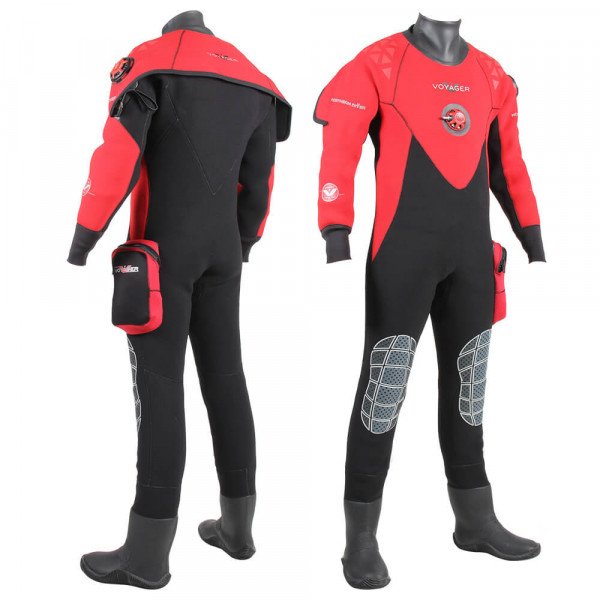Thanks guys,
@ Wibble.
I was surprised at the price for that.
How long did you wear it?
Did you stay warm?
Could you get in and out on your own?
Will I need training to use one?
So many questions.
Yay! That's why others who've been through this before can help

The ND Voyager is their entry level drysuit. It's good value for money and made of thicker neoprene. This means it's got some intrinsic insulation, but it will affect your buoyancy. ND's next suit is the Divemaster which has some better quality materials. Have seen these on various boat dives in the UK.
For a first drysuit they're excellent value. I used the Voyager for about 70 dives and then threw money at a membrane suit as I went down the yellow brick road to technical diving (yellow as it's gold lined and expensive!). Since then it's been my backup suit, but I've not used it since. Now I've replaced the expensive membrane suit with another even more expensive membrane suit and custom heated undersuit (meaning that it's much less of a chore on 2h30+ dives in 10 degree water).
You do need drysuit training. Not hard, but do need someone to show you the ropes. Big thing about drysuits is you pump air into them on the descent. When you ascend, this air expands, so you need to dump it; that's where the skill comes in.
Donning & doffing a drysuit... There's the back-closing zip which needs someone else to close and open it. They are probably the best types of zip as they're out of the way and relatively short. The front-opening zip goes from top-left (or top right) to bottom-right (or bottom-left). These are long and have quite an impact upon the design and are much more expensive to manufacture, hence are in top-end drysuits.
Undersuits are the critical part of staying warm in a drysuit. Thicker in winter than summer.
For your early days of diving, you'll be diving with others. So a back-closing drysuit's probably best.
You've said you're of the older age (me too). The second best invention for scuba diving after the aqualung is the pee valve. Yes, it is. As soon as I get near water I pee like a stallion. Which does mean that I'm correctly hydrated. A pee valve is a tube which you connect to a catheter (sticky condom) that dumps your pee overboard. Occasionally -- last Saturday in my case -- the bloody thing leaks so the undersuit and underwear have been in the wash! This is the first time it's leaked in years though, basically I rushed and didn't check that it was properly glued on.
Another feature of drysuits is dry gloves which are much nicer in cold water. Think Marigolds attached to the suit, so dry hands. Until you slash the glove on the wreck.
---
If you're of large build (~42" chest) and 5'7" ish then this suit might fit. (Am not trying to be Dell Boy here, but I'd like to find someone who would appreciate it as I've another membrane suit as backup!). BTW it's got drygloves (the ND system) and a brand new and
unused Halcyon pee valve (glued onto the suit, so can't remove it!) -- I had it fitted but shortly after changed suits before I ever used it. Oh, and it has a one-piece undersuit too.




